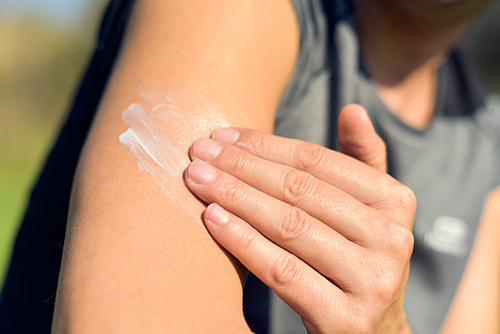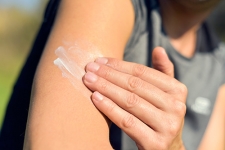
Let’s take a step by step look at how sunburns occur and what they do to your skin:
Melanin. Melanin is a type of pigment molecule that resides in your skin. Melanin is, surprisingly enough, responsible for some of the warmth that you feel when you’re out in the sun – in fact, that feeling of warmth comes from those pigment molecules absorbing and converting all those UV rays (that are hitting your skin) into heat. When you’re exposed to sun, the melanin in your skin redistributes itself to help cover and protect the area of cells where the DNA resides. However, those with fair skin are at a bit of a disadvantage right from the get-go as they possess very little melanin that’s available to be redistributed. If melanin can’t get to an area (or isn’t available to begin with) then damage to DNA will begin to occur.
Blood Flow. Once the body recognizes that DNA damage is occurring, blood vessels in the dermis – the layer below the epidermis – start to dilate in an attempt to provide nourishment to that outermost skin layer. While all that is going on at the skin’s surface, the cells in the basal layer (the bottom layer of the epidermis) – which is where melanin is produced – start working double time in an effort to produce enough additional pigmentation to protect the cells. But, this doesn’t happen instantaneously – in actuality, it can take anywhere from 24 hours to 72 hours for this additional pigmentation (aka, “a tan”) to occur. That additional pigment will help protect you from further damage, but it can’t reverse – or stop – what has already occurred.
Inflammation. Not long after the initial sun exposure (for some it may be one hour while for others it could easily be 10 to 12 hours later) the classic “steamed lobster” look begins to take hold. That’s because you’re body is doing what’s it’s designed to do, which is repair itself…which it accomplishes by increasing blood flow to the affected area to speed healing. Damaged skin plus increased blood flow equals red, swollen, painful skin. The longer you allow your skin to burn, the greater the damage will be…meaning that heat damage can also create first-degree burns.As you can see, sunburns are no laughing matter. In fact, they’re really pretty harmful. Do your best to ALWAYS protect yourself by wearing sunscreen and sunglasses. Make sure to check back for part 2 of our series on the Anatomy of a Sunburn for more information on how sunburns affect your skin.

